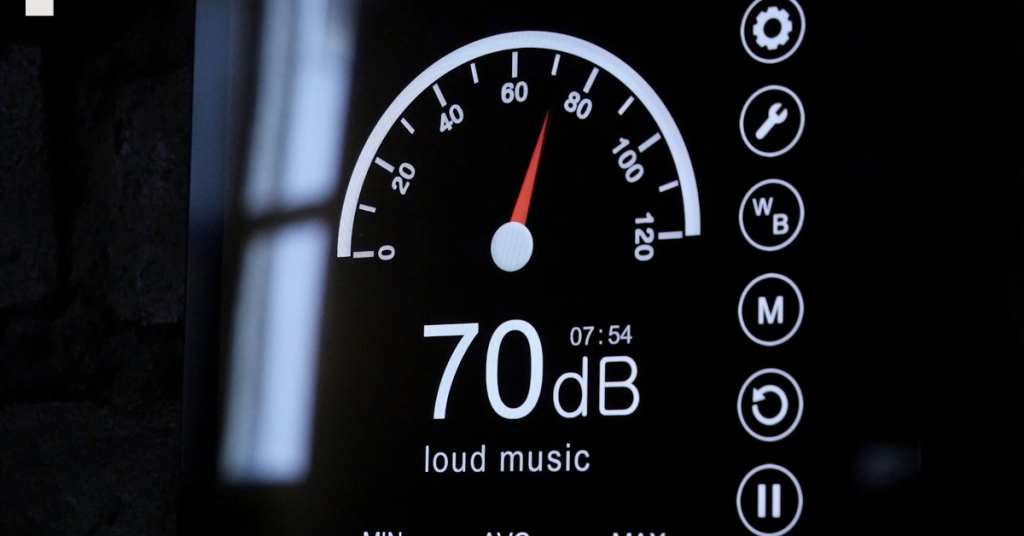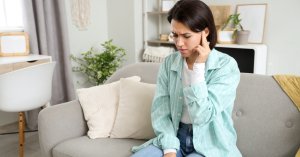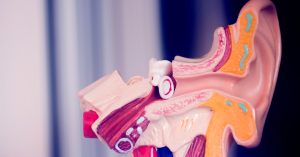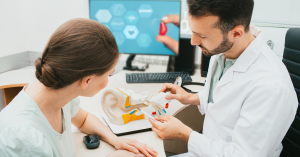In today’s digital age, there’s an app for nearly everything—including measuring the noise around you. Sound meter apps, also known as decibel meter apps, have become increasingly popular among people concerned about hearing health, especially older adults and caregivers. These apps promise to turn your smartphone into a pocket-sized sound level meter, capable of gauging whether the noise in your environment is safe or potentially harmful.
But with all their convenience and slick user interfaces, one important question remains: Are sound meter apps accurate enough to rely on—especially when your hearing is on the line? Whether you’re trying to determine if a restaurant is too loud for your hearing aids or want to protect your ears at a concert, knowing how much trust you can put in these apps is crucial. In this article, we’ll explore how these apps work, compare them to professional devices, and examine their strengths, weaknesses, and best-use scenarios.
Let’s dive into the reality behind these apps—and what you really need to know before depending on them.
How Sound Meter Apps Work
At a glance, sound meter apps seem remarkably straightforward: open the app, watch the needle or digital readout move, and you’ll know exactly how loud your environment is—right? Not quite. To understand their accuracy, it helps to know how these apps actually measure sound.
Most sound meter apps work by utilizing your smartphone’s built-in microphone to detect sound waves. These waves are then translated into decibel (dB) readings through software algorithms that estimate sound pressure levels. Some apps also provide additional features like noise exposure over time, frequency analysis, and even customizable alerts for when sound exceeds certain thresholds.
However, there’s a significant technical gap between these apps and professional sound level meters. Smartphones are primarily designed to capture speech, not to function as scientific instruments. Their tiny microphones are optimized to filter out background noise and enhance voice clarity during calls—not to capture an accurate representation of the full spectrum of sound in an environment.
To compensate for this, some higher-end sound meter apps allow manual calibration. Users can adjust the app’s sensitivity by comparing it to a reference device, such as a certified sound level meter. While this can improve accuracy somewhat, it’s highly dependent on the user’s ability to calibrate correctly and consistently.
Another key factor is software variability. Different apps may use distinct algorithms to interpret sound data, leading to variations in decibel readings even on the same device. This inconsistency makes it difficult to rely on any one app as a definitive measure of environmental noise.
In summary, while sound meter apps do a decent job of estimating sound levels using existing smartphone hardware, their readings are limited by the quality of the microphone and the app’s ability to process that data effectively. They’re tools of convenience, not precision.
Comparing Apps to Professional Sound Level Meters
When it comes to assessing noise levels, professional sound level meters (SLMs) are the gold standard. These devices are specifically designed and calibrated to meet strict accuracy standards, often required in occupational health, environmental monitoring, and industrial settings. So how do smartphone apps stack up in comparison?
Several independent studies and tests have evaluated the performance of sound meter apps against certified SLMs. The general consensus? Most apps fall short in terms of precision, especially when used without external calibrated microphones. While some apps can get within 2–5 decibels of a professional meter under ideal conditions, others may deviate by much more—sometimes 10 dB or more. That margin can mean the difference between a safe environment and one that poses a risk to your hearing.
For example, a study published in the Journal of the Acoustical Society of America found that only a small handful of apps, when paired with high-quality external microphones, were capable of meeting industry standards. Without this external equipment, even the best apps were inconsistent and not reliable enough for occupational use.
Professional meters are engineered to detect a wide range of frequencies and can be adjusted for different time weightings (such as A-weighting for human hearing sensitivity). They’re also regularly calibrated using reference tones to ensure accuracy over time. In contrast, smartphones lack uniform microphone quality, and most users don’t have the knowledge—or equipment—to perform proper calibration.
Still, not all apps are created equal. Some, like those developed by academic institutions or in collaboration with acoustic engineers, offer more reliable results than basic or free versions found in app stores. But even these should be seen as approximations, not replacements for certified measurement tools.
In short, while sound meter apps can give a general sense of noise levels, they shouldn’t be used where exact measurements are critical—such as determining compliance with workplace noise regulations or diagnosing hearing-related issues. Their convenience is valuable, but their limitations are equally important to understand.
Factors That Affect App Accuracy
Not all sound meter apps are equally accurate—and even the best ones can deliver misleading readings depending on a variety of factors. Understanding what influences app performance can help you use them more wisely and avoid drawing false conclusions about your environment.
1. Smartphone Microphone Quality
The microphone is the heart of any sound measurement tool. Unfortunately, the ones built into smartphones are not designed for acoustic precision. They’re optimized for speech frequencies and tend to suppress background noise, which skews decibel readings. High-end phones may perform better, but inconsistencies between brands and models make it hard to rely on app data across devices.
2. Background Noise and Reverberation
Ambient noise, echoes, and reflective surfaces can significantly alter sound readings. For example, measuring in a room with hard floors and bare walls may produce higher readings than in a carpeted space with soft furnishings, even if the actual noise source is the same. Apps often can’t distinguish between the primary sound and background reverberations.
3. App Calibration and Algorithms
Most apps require manual calibration to be accurate, which many users skip or don’t know how to perform. Even when calibrated, apps use proprietary algorithms to estimate decibel levels—some more advanced than others. An app that hasn’t been updated regularly or lacks scientific backing may produce wildly inaccurate results.
4. Type of Sound Being Measured
Not all sounds are equal in the eyes (or ears) of a microphone. Sudden, high-pitched, or low-frequency sounds may be distorted or missed entirely depending on the app and microphone’s sensitivity range. For example, construction noise may be underreported, while a high-pitched alarm could be exaggerated.
5. Orientation and Positioning
The way you hold your phone matters. Pointing the microphone directly at a sound source can yield different results than holding it at an angle or with a case covering the mic. Additionally, proximity to the source will naturally affect the reading—closer equals louder.
6. Operating System Limitations
Some mobile operating systems restrict access to raw audio input, limiting how accurately an app can analyze sound. iOS and Android differ in how they handle audio processing, which can result in variations in app performance across platforms.
Together, these factors illustrate why sound meter apps should be used for ballpark estimates rather than precise readings. Being aware of these limitations helps users interpret app data with the right level of skepticism—and avoid taking risky noise exposure decisions based solely on smartphone measurements.
When Sound Meter Apps Are Useful (and When They’re Not)
Despite their limitations, sound meter apps aren’t without value. In fact, when used appropriately and with realistic expectations, they can be helpful tools—especially for people concerned about protecting their hearing in everyday situations. The key is knowing when these apps are useful, and when you should opt for more reliable tools.
Useful Scenarios: Everyday Awareness
Sound meter apps are excellent for providing quick, approximate noise level readings in day-to-day environments. For instance:
- At a restaurant or café, they can help you decide whether the ambient noise is too high for comfortable conversation or for using hearing aids.
- At concerts or sporting events, they can alert you to potentially harmful noise exposure, reminding you to wear ear protection.
- Around the home, they can help identify noisy appliances or environments that might contribute to stress or sleep disturbances.
In these situations, you don’t necessarily need laboratory-grade precision—just a general sense of how loud things are. Most apps can reliably indicate whether a sound environment is quiet, moderate, or potentially damaging (above 85 dB), which can be enough to prompt action.
When Not to Rely on Apps
There are also clear situations where sound meter apps should not be trusted as your sole source of information:
- Workplace compliance: Occupational safety regulations often require noise monitoring with calibrated, certified equipment. App readings would not be accepted for legal or medical documentation.
- Hearing diagnostics: If you’re experiencing hearing issues, relying on an app to determine noise exposure won’t replace a professional hearing test or evaluation by an audiologist.
- Long-term exposure tracking: Apps are not consistent enough for accurately tracking cumulative noise exposure over days or weeks—important data if you’re monitoring for potential hearing loss.
Maximizing App Usefulness
To get the most from a sound meter app, choose one developed by reputable sources (such as academic institutions or organizations specializing in hearing health), and consider using an external calibrated microphone if you want better accuracy. Always use app readings as a rough guide—not a final answer.
Ultimately, these apps shine as educational and awareness tools. They can encourage better habits, such as wearing ear protection or avoiding prolonged exposure to loud environments, especially for those at greater risk of hearing damage. But like any tool, their effectiveness depends on how and when they’re used.
Protecting Your Hearing: Better Safe Than Sorry
Whether or not a sound meter app is perfectly accurate, one truth remains unchanged: consistent exposure to loud noise can lead to permanent hearing damage. For older adults, people with existing hearing issues, or caregivers supporting loved ones with hearing loss, adopting a proactive approach to hearing health is far more important than chasing perfect decibel readings.
Understanding Safe Listening Levels
Experts generally agree that sounds above 85 decibels (dB) can begin to damage your hearing with prolonged exposure. This includes common sources such as busy traffic, power tools, live music, and even some home appliances. While a few minutes in a loud setting may not cause immediate harm, repeated or extended exposure adds up over time.
Even if your app isn’t 100% accurate, if it consistently shows readings in the 80–90+ dB range, it’s a strong signal that hearing protection may be needed. Think of your sound meter app as a digital reminder to listen mindfully and act when things get too loud.
Simple Ways to Protect Your Ears
- Wear earplugs or noise-canceling headphones in loud environments like concerts, construction sites, or sporting events.
- Take listening breaks in noisy settings—step outside or to a quieter area every hour or so.
- Turn the volume down when using earbuds or headphones. Use the 60/60 rule: listen at no more than 60% volume for no longer than 60 minutes at a time.
- Use soundproofing techniques in your home if constant noise (like traffic or noisy neighbors) is a problem.
- Avoid sudden loud noises or use hearing protection during fireworks, hunting, or using loud tools.
Get Your Hearing Checked Regularly
No app can substitute a professional hearing exam. If you notice that speech sounds muffled, you often ask people to repeat themselves, or you experience ringing in your ears (tinnitus), it’s time to consult a hearing specialist. Regular hearing tests—especially for those over 50—are an essential part of overall health.
The Bottom Line
Sound meter apps can serve as a first line of awareness, helping users recognize when environments might be too loud. But your ears don’t need you to be exact—they just need protection. When in doubt, it’s always better to play it safe. Your future self will thank you for every decibel you protected yourself from today.
Conclusion
Sound meter apps offer a convenient and accessible way to become more aware of your environment’s noise levels, and for many people, that awareness is the first step toward protecting their hearing. While these apps can give helpful approximations—especially in everyday settings—they aren’t built to deliver the precision of professional sound level meters. The accuracy of their readings can vary widely depending on the device, app design, background noise, and even how the phone is held.
For casual use—like checking the volume in a restaurant, monitoring loud appliances, or raising awareness about potentially hazardous noise—these apps can be very helpful. But when it comes to workplace safety, clinical evaluation, or hearing health decisions, they shouldn’t be relied on as your only source of information.
Most importantly, whether or not the numbers on your screen are exact, the message they send still matters. If your app suggests things are too loud, they probably are—and it’s wise to take action. Protecting your hearing is a lifelong investment, and tools like sound meter apps, used responsibly, can play a small but meaningful role in preserving your quality of life.
FAQ
What is the most accurate sound meter app?
Some of the most reliable sound meter apps include NIOSH Sound Level Meter (iOS) and SPLnFFT Noise Meter, both of which have been tested in research environments. Apps developed by universities or health organizations tend to have better algorithms and more accurate results, especially when paired with external calibrated microphones.
Can a smartphone microphone measure high decibel levels accurately?
Smartphone microphones are not designed for precise acoustic measurement. They’re built to capture speech and reduce background noise, which limits their ability to measure extremely loud or subtle sounds accurately. At best, they offer general approximations of high decibel levels.
Are sound meter apps good for detecting harmful noise?
While they shouldn’t be considered medical-grade tools, sound meter apps can be useful for alerting you to potentially harmful environments. If your app regularly shows readings over 85 dB, it’s a good idea to wear ear protection or leave the area—even if the reading isn’t exact.
Do I need an external microphone for better results?
Yes, using an external calibrated microphone can significantly improve the accuracy of your app’s readings. Some professional-grade mics are designed to work with smartphones and can bring app readings much closer to those of certified sound level meters.
Can sound meter apps help protect my hearing?
Yes, when used correctly, these apps can encourage safer listening habits. They raise awareness about noisy environments and can prompt users to take action—like using earplugs, moving away from loud sources, or turning down the volume—helping to reduce the risk of long-term hearing damage.
“This article is for informational purposes only and is not a substitute for professional medical advice, diagnosis, or treatment. If you are concerned about your hearing or ear health, please consult a qualified healthcare provider.






